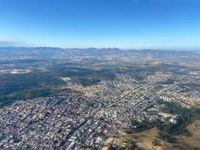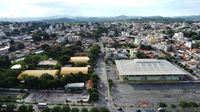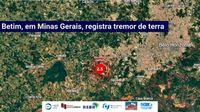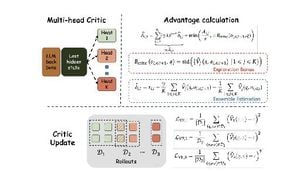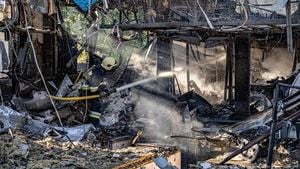On Saturday afternoon, March 22, 2025, residents of Betim, in the metropolitan region of Belo Horizonte, witnessed a tremor measuring 2.5 on the Richter scale. The shake, although mild, stirred concern among local inhabitants, notably those who felt the earth move beneath their feet around 14:35 local time. According to the Brazilian Seismographic Network (Rede Sismográfica Brasileira), small tremors are quite common in Minas Gerais, the Brazilian state that registers the highest number of seismic events.
While the tremor caused moments of panic, no injuries or structural damages were reported, putting the community’s fears somewhat at ease. The official response from the Civil Defense of Betim corroborated that they had received reports about the tremor but noted, "No calls or incidents regarding injuries or damage to properties were recorded at this time," emphasizing the low impact of the seismic activity.
Many residents took to social media to share their experiences, with some describing how the ground shook and how they initially mistook the noise for something like a loud thunderclap or an explosion from a nearby gas depot. Ana Paula dos Santos, a local resident from the Niterói neighborhood, vividly recounted, "It was something very quick. The ground shook, it felt like it was going to crack open. I thought it was something from the gas depot nearby. It was horrible. I’m still in panic, dying of fear!" Such sentiments echoed through the community, as the unexpected tremor left many feeling anxious.
Bruno Collaço, a seismologist from the University of São Paulo's Seismology Center (Centro de Sismologia da USP), explained the natural phenomenon behind this tremor. He stated, "Natural tremors, in the vast majority of cases, are caused by the immense geological pressures at work within the Earth's crust. Despite the scare, the chances that this tremor could lead to something more serious are very low." Collaço noted that the frequent occurrence of small seismic events indicates the geological activity that characterizes the region.
According to reports, the tremor registered across various neighborhoods in Betim, with significant feedback indicating it was felt in at least ten different locations, such as Arquipélago Verde, Filadélfia, and Jardim Teresópolis. This consensus among residents indicates a widespread experience of the phenomenon, contributing to the shared sense of alarm.
The local government also pointed out that discussions have been underway since last year concerning the installation of a seismograph in Betim. As the city currently lacks this crucial instrument, officials have been in collaboration with the State Civil Defense to identify the causes of the seismic activities reported by residents. They urged caution as well, with only the State's Central Intelligence able to assess future potential tremors.
Understanding how earthquakes are measured is vital for contextualizing such events. As noted by the Geological Service of Brazil (SGB), the relative size of earthquakes is quantified with what is called magnitude. In essence, a tremor of magnitude 2.5, like the one experienced in Betim, is categorized as a weak earthquake, generally undetectable to people but recorded by seismographs. However, due to their shallow nature, these tremors can sometimes be felt by those in proximity to the epicenter.
For those interested in earthquake measurement, the Michigan Technological University states that the difference in amplitude of seismic waves between the degrees of the Richter scale is a factor of ten. For instance, an earthquake measuring 6.0 would have waves ten times larger in amplitude than one measuring 5.0. This highlights why different quakes can have various levels of perceptibility and potential damage.
Despite the recent occurrence, experts like Bruno Collaço stress that the overall probability of more significant seismic events occurring, especially after such a low-magnitude tremor, remains minimal. He explained, "Tremors of this magnitude typically do not yield aftershocks, but the occurrence of further seismic activity in the region cannot be dismissed entirely. It is challenging to predict such occurrences with precision." Furthermore, it is noted that similar earthquakes of minor magnitude, ranging from 2.0 to 3.0, happen frequently across Minas Gerais, occurring weekly.
Recall the last few months, as January saw the town of Felixlândia, located 180 kilometers from Belo Horizonte, reporting three minor tremors in just a couple of days. This further emphasizes the geological dynamism of the region, suggesting that while residents may experience temporary anxiety due to these events, a significant risk remains low.
In conclusion, the minor earthquake in Betim serves both as a reminder of nature's unpredictability and the importance of preparedness. As the civil defense continues to monitor the situation, residents are encouraged to stay informed and remain calm in the face of such seismic phenomena, understanding that they are part of a broader geological landscape that has characterized the area for centuries.
